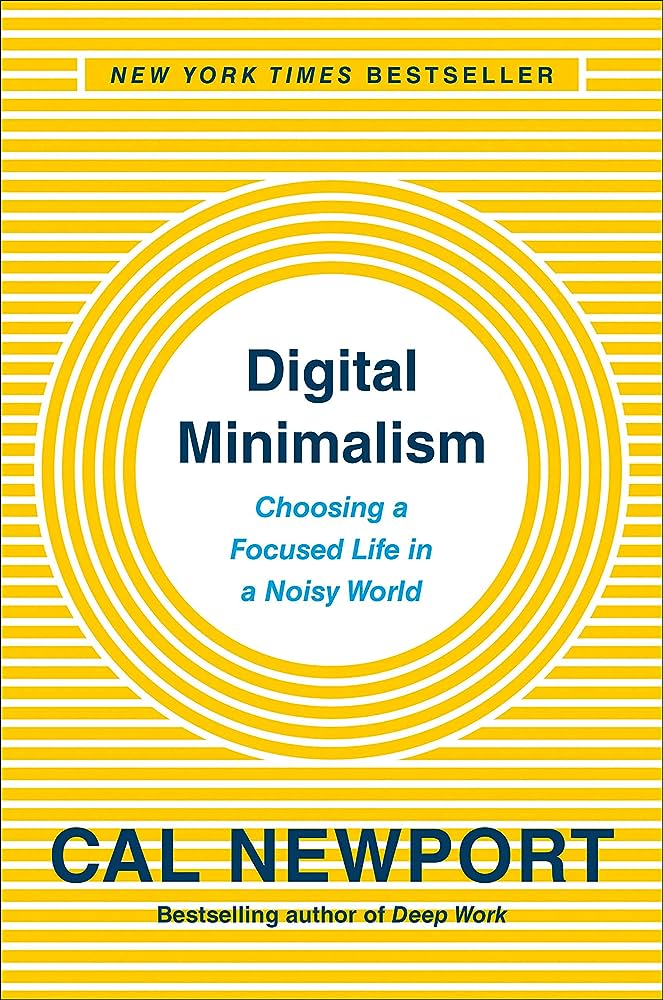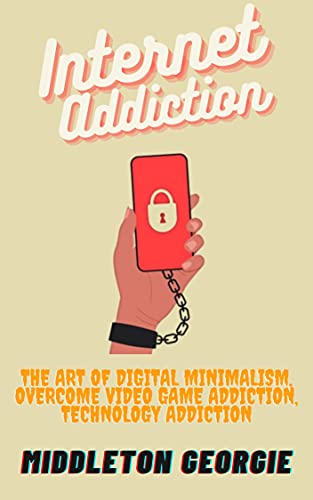
In an increasingly digital world, where distractions abound and we find ourselves constantly tethered to technology, it’s easy to feel overwhelmed and consumed by the digital clutter. But what if there was an art to minimalism in this digital age? A way to declutter our digital lives and find a sense of balance and calm amidst the chaos? Enter the art of digital minimalism – a practice that encourages us to simplify, streamline, and prioritize our digital habits, ultimately allowing us to reclaim our time, attention, and focus. In this article, discover the transformative power of digital decluttering and explore practical tips to embrace the art of digital minimalism.
Table of Contents
What is Digital Minimalism?
Defining digital minimalism
Digital minimalism can be defined as a philosophy or lifestyle approach that focuses on intentionally reducing and optimizing your use of digital technologies to enhance well-being, productivity, and overall quality of life. It involves being mindful and intentional about the digital tools and platforms we engage with, and making conscious choices to eliminate unnecessary or excessive use of technology.
The principles of digital minimalism
Digital minimalism is guided by several key principles:
-
Intentionality: Being deliberate and purposeful in your use of digital tools, ensuring that they align with your values and goals.
-
Selectivity: Choosing the digital technologies and platforms that add value to your life and discarding those that are unnecessary or unproductive.
-
Mindfulness: Cultivating awareness and being present in your digital interactions, rather than mindlessly scrolling or multitasking.
-
Boundaries: Setting clear limits and establishing boundaries around technology use to prevent it from invading and overwhelming other aspects of your life.
-
Optimization: Streamlining and organizing your digital space to minimize distractions and maximize productivity.
By embracing these principles, you can adopt a more intentional and mindful approach to your digital life, allowing for a greater sense of control and overall well-being.
Benefits of Digital Minimalism
Reduced digital distractions
One of the key benefits of digital minimalism is the reduction of digital distractions. By intentionally minimizing the number of apps, notifications, and online platforms you engage with, you can create a more focused and distraction-free environment. This can significantly increase your ability to concentrate and complete tasks without constant interruptions.
Increased focus and productivity
Digital minimalism also promotes increased focus and productivity. When you eliminate unnecessary digital clutter and distractions, you create space for deep work and meaningful engagement with your tasks. With fewer interruptions, you can dedicate your full attention to the task at hand, leading to enhanced productivity and efficiency.
Improved mental well-being
Another significant advantage of digital minimalism is the positive impact it can have on your mental well-being. By reducing the time spent on digital devices and social media, you can mitigate the negative effects of constant exposure to information overload, comparison, and online toxicity. This can lead to reduced stress, anxiety, and feelings of overwhelm, promoting a healthier mindset and improved emotional well-being.
Enhanced relationships and social interactions
Digital minimalism also emphasizes prioritizing and nurturing real-life relationships and social interactions. By consciously setting boundaries and limiting your time on social media and digital platforms, you create more opportunities for face-to-face connections and quality time with loved ones. This can lead to stronger relationships, deeper connections, and a greater sense of fulfillment in your personal life.
Better use of time
Lastly, digital minimalism helps you make better use of your time. By consciously evaluating and curating your digital activities, you can eliminate time-wasting habits and prioritize activities that align with your values and goals. This can allow you to reclaim valuable time for self-care, personal growth, hobbies, and pursuing meaningful experiences offline.

This image is property of Amazon.com.
How to Practice Digital Minimalism
Perform a digital audit
To begin your digital minimalism journey, start by conducting a digital audit. Take an inventory of all the digital tools, apps, and platforms you currently use and evaluate their significance and value in your life. Identify any that may be unnecessary or causing distractions and consider removing or minimizing your engagement with them.
Identify essential digital tools
Once you have completed your digital audit, identify the essential digital tools and platforms that serve a purpose in your personal and professional life. By focusing on these core tools, you can minimize the time and energy spent on less meaningful or unproductive digital activities.
Create boundaries and limits
Establish clear boundaries and limits around your technology use. Set specific timeframes or designated periods of the day for engaging with technology, and avoid mindless scrolling or constant availability. By creating structure and limitations, you can ensure that technology remains a tool rather than a constant companion.
Implement digital detoxes
Regularly incorporate digital detoxes into your routine. Allocate periods of time, such as weekends or evenings, where you completely disconnect from technology, allowing yourself to recharge and engage in offline pursuits. Use this time for activities that bring you joy, relaxation, and fulfillment without the distraction of digital devices.
Establish mindful technology habits
Finally, cultivate mindful technology habits as part of your daily life. This involves being intentional and present during your digital interactions, avoiding multitasking, and setting aside dedicated time for focused work or leisure. By integrating mindfulness into your digital activities, you can enhance your overall digital well-being and ensure a healthier relationship with technology.
Digital Minimalism in Your Daily Life
Simplifying your digital devices
Simplify your digital devices by decluttering your home screen and removing unnecessary apps. Limit your device usage to only the essential apps that add value to your life. Create folders to organize apps by category, making it easier to locate and access them when needed.
Streamlining your digital workspace
Apply the principles of minimalism to your digital workspace. Organize your computer files and folders in a logical and streamlined manner, enabling efficient access and minimizing time wasted searching for documents. Remove unnecessary desktop icons and utilize productivity tools or apps that help with organization and task management.
Organizing digital files and folders
Take the time to organize your digital files and folders regularly. Create a consistent and intuitive naming system that allows for easy retrieval of documents. Sort files into relevant folders and use tags or labels to further categorize and classify them. By keeping your digital files organized, you can save time and reduce frustration when searching for specific information.
Adopting minimalist apps and tools
Consider adopting minimalist apps and tools that align with your values and support your digital minimalism lifestyle. Look for apps that have a clean and intuitive interface, prioritize simplicity, and enhance productivity without unnecessary features or distractions. Explore minimalist note-taking apps, task managers, and email clients that promote focused and efficient digital workflows.
Unplugging from social media
Take regular breaks from social media to unplug and recharge. Consider implementing designated periods of the day or week where you refrain from using social media platforms. Use this time to engage in offline activities, connect with loved ones face-to-face, or pursue hobbies and interests that bring you joy and fulfillment.

This image is property of Amazon.com.
Impacts of Digital Minimalism on Productivity
Elimination of digital distractions
One of the significant impacts of digital minimalism on productivity is the elimination of digital distractions. By intentionally minimizing the number of distracting apps, notifications, and online platforms, you create an environment that supports focused and undistracted work. This allows you to dedicate your full attention and energy to important tasks, resulting in increased productivity.
Increased ability to focus on important tasks
Digital minimalism also enhances your ability to focus on the most important tasks at hand. By eliminating unnecessary digital noise and clutter, you can direct your attention towards tasks that align with your goals and priorities. This prevents multitasking and promotes deep work, leading to increased efficiency and the accomplishment of meaningful work.
Improved time management
By practicing digital minimalism, you gain a greater sense of control over your time. By consciously selecting the digital tools and activities that align with your values and goals, you can allocate your time more intentionally. This prevents time-wasting activities and promotes efficient time management, allowing you to make significant progress towards your desired outcomes.
Enhanced efficiency and effectiveness
Digital minimalism fosters efficiency and effectiveness in your work and personal life. By streamlining your digital tools, organizing your digital space, and setting boundaries around technology use, you create an environment that supports optimal performance and productivity. This allows you to accomplish tasks more efficiently and effectively, freeing up time for additional pursuits or leisure.
Reduced multitasking
Multitasking can hamper productivity and mental clarity. Digital minimalism encourages focusing on one task at a time, which reduces the temptation to multitask and facilitates deep engagement with the task at hand. By eliminating distractions and practicing single-tasking, you can enhance your ability to concentrate, complete tasks more efficiently, and achieve higher-quality outcomes.
Digital Minimalism and Mental Well-being
Reduced anxiety and stress
One of the significant impacts of digital minimalism on mental well-being is the reduction of anxiety and stress. Constant exposure to social media, news, and online information can contribute to feelings of overwhelm and unease. By practicing digital minimalism and consciously limiting your exposure to digital devices, you can create space for more calm, focus, and inner peace.
Greater control over technology use
Digital minimalism provides a sense of control over your technology use, which has a positive impact on mental well-being. By setting boundaries and being intentional with your digital activities, you can prevent technology from dominating your life. This fosters a healthier relationship with technology, reducing feelings of addiction or dependence and promoting a greater sense of autonomy and personal well-being.
Improved sleep quality
Excessive use of digital devices, particularly before bedtime, can disrupt sleep patterns and negatively impact sleep quality. Digital minimalism encourages adopting healthier sleep habits by establishing tech-free zones or implementing digital curfews in the evening. This allows for better sleep hygiene, leading to improved sleep quality and overall well-being.
Enhanced mindfulness and presence
Digital minimalism promotes mindfulness and presence in your daily life. By being intentional with your technology use, you can cultivate greater awareness of your digital behaviors and their impact on your well-being. This awareness allows you to make informed choices, detach from constant digital stimulation, and be more present in the moment, fostering a sense of peace, focus, and contentment.
Promotion of digital self-care
Digital minimalism encourages prioritizing self-care and mental well-being in the digital realm. This involves being mindful of your emotional responses to digital content, setting boundaries around triggering or negative online interactions, and curating your digital environment to promote positive and uplifting experiences. By practicing digital self-care, you can protect your mental well-being and cultivate a healthier relationship with technology.
This image is property of imgv2-2-f.scribdassets.com.
Building Healthy Relationships in the Digital Age
Fostering meaningful connections
Digital minimalism emphasizes building and nurturing meaningful connections in the digital age. By intentionally limiting your time on social media and digital platforms, you create more opportunities for genuine, face-to-face interactions. This allows you to foster deeper connections and cultivate stronger relationships based on authentic communication and shared experiences.
Setting boundaries with technology
Setting boundaries with technology is crucial for maintaining healthy relationships, both online and offline. By creating clear expectations and limitations around your technology use, you can ensure that it doesn’t overtake quality time with loved ones or interfere with important relationships. Setting aside designated tech-free periods or maintaining device-free zones during family or social gatherings can help prioritize meaningful connections.
Engaging in mindful communication
Digital minimalism encourages mindful communication in the digital space. By being present and intentional during online interactions, you can foster deeper connections and more meaningful conversations. Actively listening, empathizing, and responding with thoughtfulness can greatly improve the quality of your digital communication, leading to more genuine and fulfilling relationships.
Balancing online and offline interactions
Finding a balance between online and offline interactions is essential in the digital age. Digital minimalism promotes being deliberate about your time spent on digital platforms and ensuring that it doesn’t overshadow real-life experiences and connections. By setting aside dedicated time for offline interactions, you can maintain a healthy balance between the digital and physical realms, fostering well-rounded relationships.
Reducing comparison and jealousy
Social media and the digital world can fuel comparison and feelings of inadequacy. Digital minimalism encourages curating your digital environment and limiting exposure to content that triggers comparison or negative emotions. By focusing on real-life experiences, personal growth, and genuine connections, you can reduce comparison and cultivate a more positive and content mindset.
Digital Minimalism and Time Management
Preventing time-wasting activities
Digital minimalism helps prevent time-wasting activities that can eat away at your productivity and well-being. By minimizing unnecessary social media scrolling, mindless web browsing, or excessive app usage, you can reclaim valuable time in your day. This time can then be redirected towards activities that contribute to personal growth, professional development, or pursuing hobbies and passions.
Allocating time intentionally
Digital minimalism encourages intentional allocation of time. By consciously selecting the digital activities that are truly important or add value to your life, you can allocate dedicated time slots for them. This prevents time spent on unplanned or frivolous digital engagements, allowing you to make the most of your time and accomplish tasks that align with your goals and priorities.
Rediscovering hobbies and passions
Excessive technology use can crowd out time for hobbies and passions. Digital minimalism provides an opportunity to reevaluate your time allocation and make space for activities that bring you joy and fulfillment. By intentionally reducing your digital distractions, you can rediscover long-lost hobbies or explore new interests, leading to a more rewarding and balanced life.
Creating space for personal growth
Digital minimalism creates space for personal growth by freeing up time and mental energy. With fewer digital distractions, you can devote more time to self-reflection, learning, and personal development. This can involve engaging in reflective practices, reading books, taking courses, or pursuing other avenues of self-improvement that align with your values and aspirations.
Avoiding information overload
The abundance of information available in the digital realm can lead to information overload and decision fatigue. Digital minimalism helps navigate this challenge by encouraging intentional consumption of information. By curating your digital sources, prioritizing high-quality content, and setting limits on information consumption, you can avoid being overwhelmed and maintain mental clarity.

This image is property of bemorewithless.com.
Overcoming Challenges in Digital Minimalism
Dealing with FOMO (Fear of Missing Out)
One common challenge in digital minimalism is dealing with FOMO, or the Fear of Missing Out. The constant connectivity and visibility offered by digital platforms can trigger a fear of being left out or not staying up to date with the latest trends or updates. Overcoming FOMO involves recognizing its impact, deliberately limiting exposure to triggering content, and cultivating contentment in your own life and choices.
Managing social and professional expectations
Digital minimalism may pose challenges in managing social and professional expectations. Friends, family, or colleagues may have different technology practices or rely more heavily on digital communication. Openly communicating your boundaries, explaining your digital minimalism journey, and finding alternative ways to stay connected can help manage expectations and maintain healthy relationships in the digital age.
Finding alternative sources of entertainment
Reducing time spent on digital devices may require finding alternative sources of entertainment. Exploring offline hobbies, participating in physical activities, spending time in nature, or engaging in creative pursuits can serve as fulfilling alternatives to digital entertainment. Additionally, seeking out social experiences or pursuing in-person interactions can provide enjoyable and meaningful ways to spend leisure time.
Addressing the fear of being disconnected
Digital minimalism may raise concerns about feeling disconnected or out of touch. Addressing this fear involves recognizing the value of offline experiences, creating opportunities for face-to-face interactions, and maintaining an awareness of the positive impact digital minimalism can have on overall well-being. Embracing the benefits of disconnecting and cultivating a balanced lifestyle can help alleviate these concerns.
Seeking support and community
Navigating the challenges of digital minimalism can be made easier by seeking support and community. Connecting with like-minded individuals who also value minimalism and intentional technology use can provide a sense of solidarity and motivation. Engage in discussions, join online or offline communities, and share experiences and advice to build a support network that encourages and reinforces your digital minimalism journey.
Digital Minimalism for a Sustainable Future
Reducing electronic waste
Digital minimalism contributes to a more sustainable future by reducing electronic waste. By minimizing the constant upgrading and replacing of digital devices, and making deliberate choices to extend the lifespan of your devices, you can help reduce the environmental impact associated with the production, consumption, and disposal of electronic devices.
Lowering energy consumption
Digital minimalism also helps lower energy consumption, contributing to a more sustainable future. By consciously limiting the use of digital devices, unplugging unused or unnecessary electronics, and optimizing energy settings, you can reduce your carbon footprint and conserve energy resources. This small but significant step can have a positive impact on the environment.
Building a more mindful relationship with technology
Digital minimalism promotes building a more mindful and intentional relationship with technology. By being conscious of the impact of your digital activities on yourself and the world, you can make choices that align with sustainability and environmental responsibility. This involves considering the environmental impact of digital services, reducing unnecessary digital consumption, and supporting companies and platforms that prioritize sustainability.
Promoting digital minimalism as a way to combat consumerism
Digital minimalism challenges the prevailing consumerist culture that encourages constant upgrading and mindless consumption. By advocating for digital minimalism as an alternative approach, you can promote conscious consumption, encourage longevity in the use of digital devices, and reduce the electronic waste generated by the excessive demand for new technology.
Advocating for responsible digital practices
Digital minimalism also involves advocating for responsible digital practices at both individual and societal levels. By raising awareness about the potential risks and negative impacts of excessive technology use, you can encourage others to adopt more mindful and intentional approaches to their digital lives. This includes promoting digital literacy, privacy protection, and ethical considerations around the use of digital technologies.
As technology continues to play an ever-increasing role in our lives, embracing digital minimalism can provide numerous benefits for our well-being, productivity, relationships, and the environment. By practicing intentionality, setting boundaries, and cultivating mindfulness in our digital interactions, we can reclaim control over our digital lives and create a more balanced and fulfilling relationship with technology.

This image is property of miro.medium.com.








